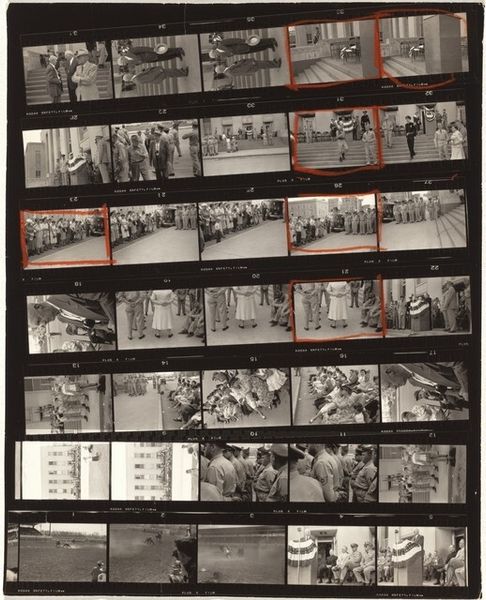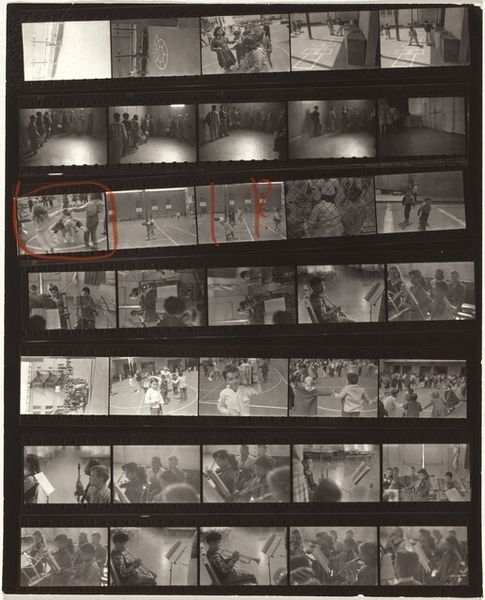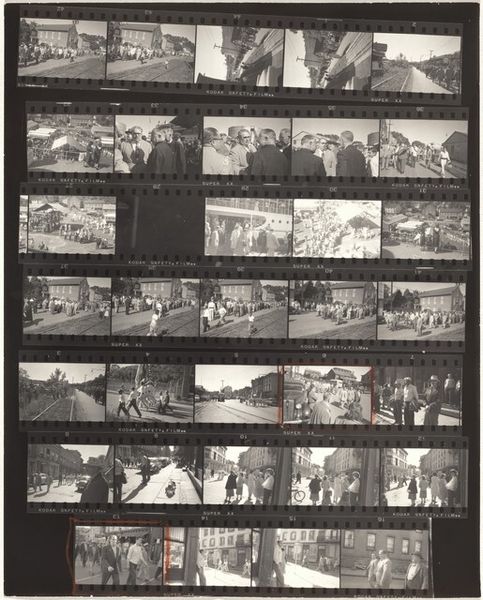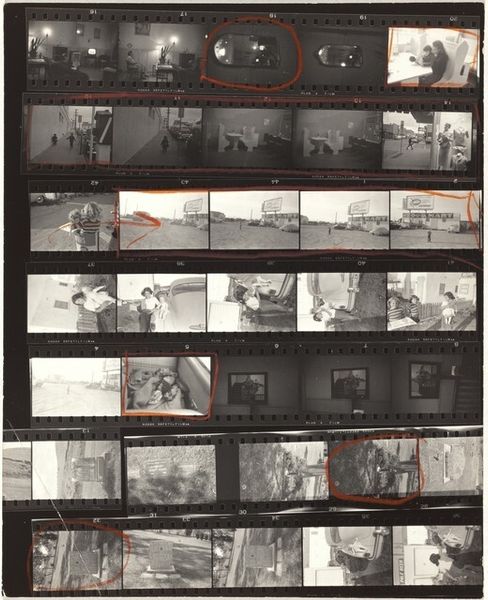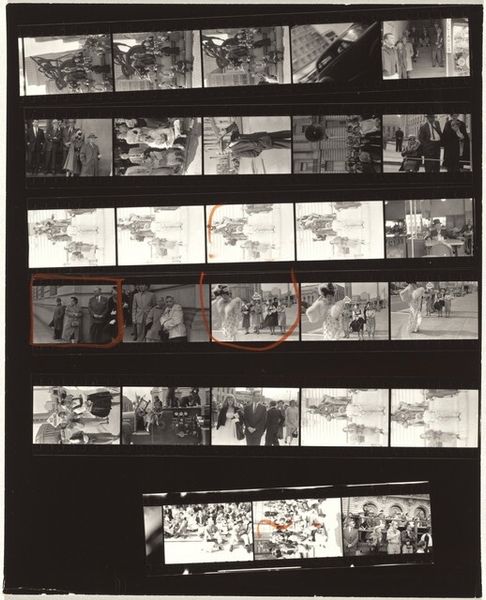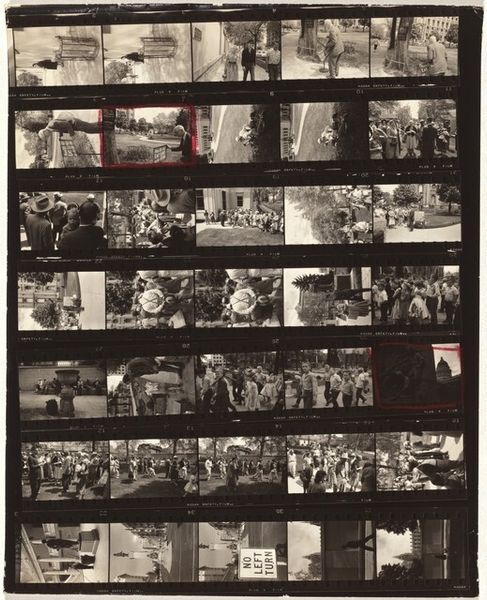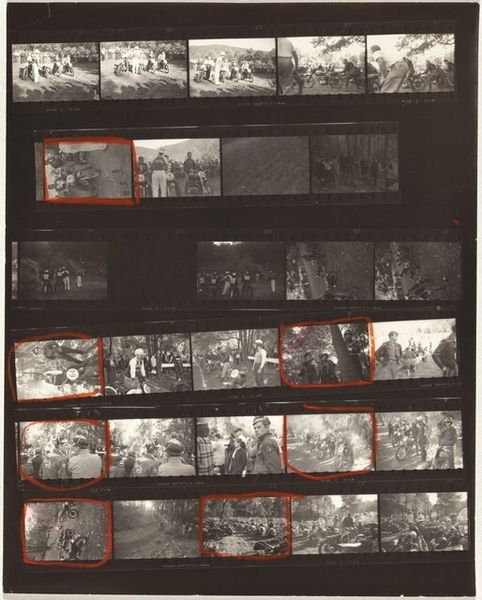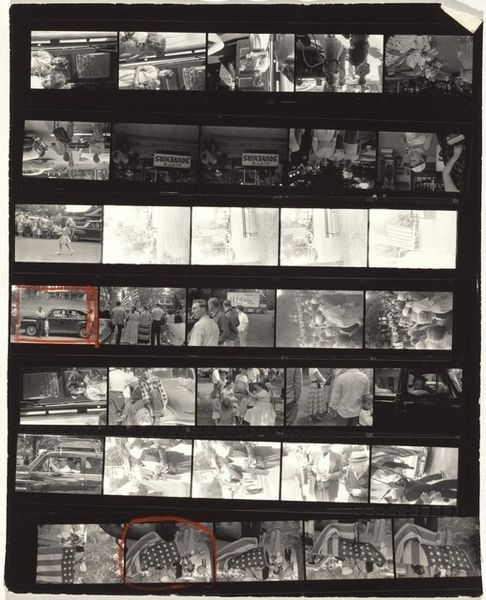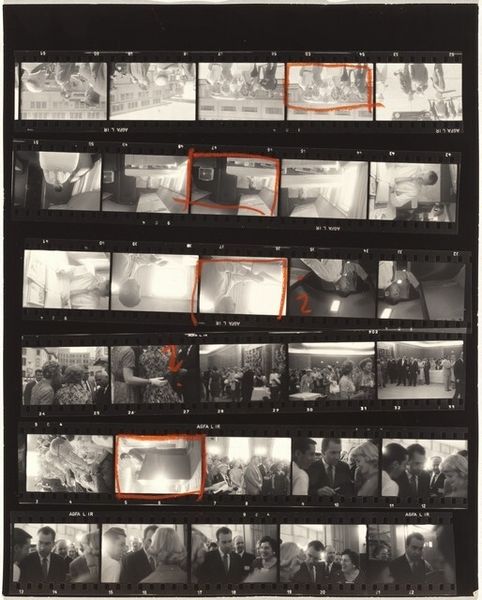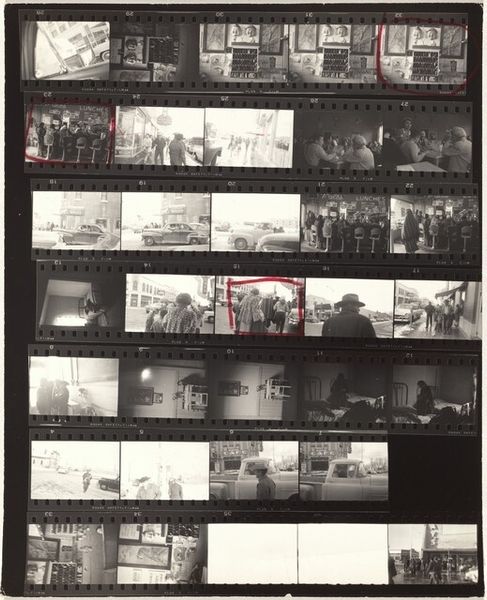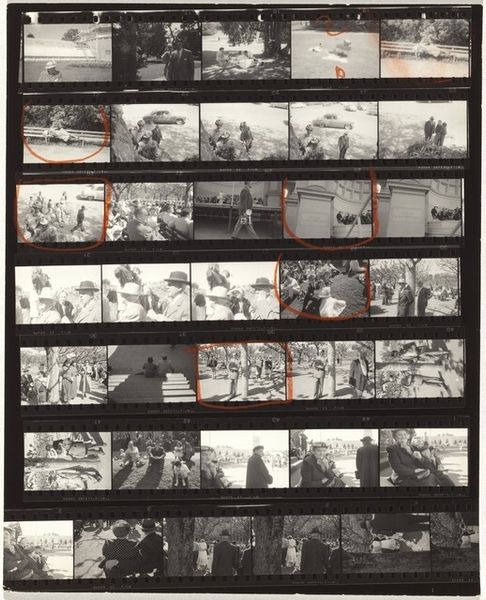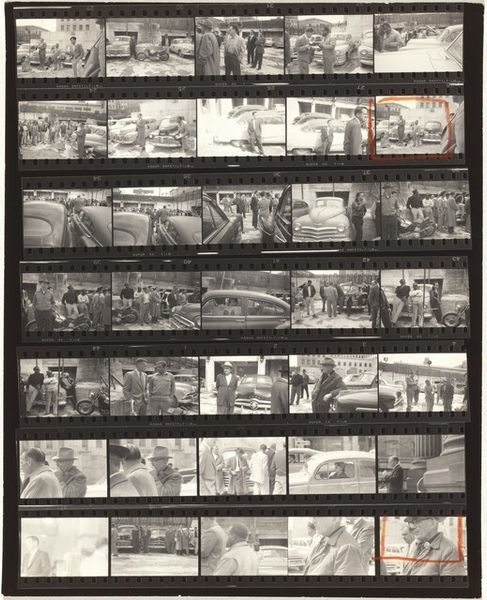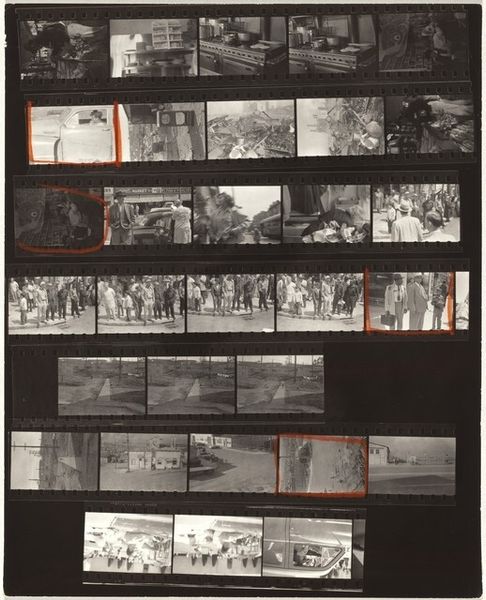
photography, gelatin-silver-print
#
portrait
#
film photography
#
street-photography
#
photography
#
gelatin-silver-print
#
pop-art
#
realism
Dimensions: sheet: 25.2 x 20.1 cm (9 15/16 x 7 15/16 in.)
Copyright: National Gallery of Art: CC0 1.0
Curator: Here we have Robert Frank's "Newburgh, New York IV," a gelatin silver print from 1955. It presents as a film strip, several frames displaying different vignettes, with some frames demarcated by red borders. What’s your initial take on it? Editor: A contact sheet...raw, immediate. Like snippets of a memory, or someone rifling through a forgotten box of photos in the attic. There's a palpable energy to this. It seems less about individual shots and more about a collection of moments, fleeting impressions. Curator: That’s quite perceptive. Frank, of course, wasn’t aiming for perfectly posed shots. He sought spontaneity, capturing the gritty reality of mid-century America. You can see here how the materiality adds to this…a strip with varied photos, images showing gatherings, bikes, cars... the red highlighting hinting at a selection process that has shaped Frank’s overall goal. Editor: Right, it's as though he is editing reality through photography, and then re-editing his choices through the selections in the contact sheets. It begs the question, why these frames in particular? They’re all a part of the American scene: cars, motorbikes, leather jackets— Curator: The tropes of his era. Yet his choices make it, despite all its specificity, speak to broader themes. You sense the artist zeroing in on some elusive truth that lurks in plain sight. The arrangement and its frames becomes another dimension...a key visual component to understand his message. Editor: Exactly. The materiality here enhances that message. Silver gelatin prints were not necessarily considered art then but journalistic artifacts. This work asks, are these images evidence or simply documentation? Frank teeters both—he uses his aesthetic to push boundaries while creating art of memory. It also invites us to be active viewers... Curator: An active audience engaged in constructing its own meaning. It almost feels unfinished… perhaps Frank intended this? It is rare to see these “in-between” states of creation. Editor: Yes. His photographic essays became this raw reflection. Curator: Frank did shift our understanding, didn’t he? In short, these fragments collectively form an art narrative as compelling as any composed image. Editor: I agree; now, I am starting to imagine this contact sheet to be this generation's version of social media!
Comments
No comments
Be the first to comment and join the conversation on the ultimate creative platform.
